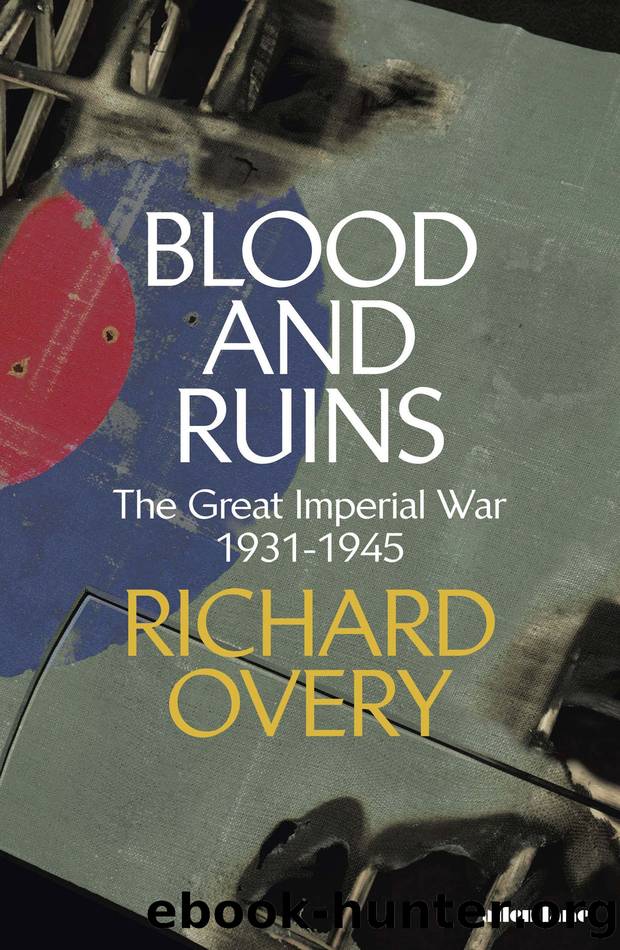Blood and Ruins by Richard Overy

Author:Richard Overy [Overy, Richard]
Language: eng
Format: epub
ISBN: 9780141927831
Publisher: Penguin Books Ltd
Published: 2021-09-24T00:00:00+00:00
WINNERS AND LOSERS: THE WARTIME LEARNING CURVE
The âlearning curveâ was a term contemporary with the wartime crisis, first coined in 1936 and applied during the war to assessments of productivity development in the American shipbuilding industry. Although intended as a way to measure the rate at which managers and workforce learned to reduce the hours spent producing a unit of output, it seems singularly appropriate as a metaphor for the way in which armed forces during the war improved their fighting capability. The theory posits two kinds of learning: organizational learning and labour learning. The managerial side is important because managers can innovate technically and look at performance indicators to see where remedies are needed; labour needs to adapt to unfamiliar circumstances and equipment and learn how to master them.192 That is exactly what armed forces did during the war, if not always uniformly or well. Military managers assessed deficiencies, remedied tactics, and promoted innovative technology and organization, while the ordinary soldier, sailor and airman became with training more adept and, with the necessary technical aids, more efficient in combat. In assessing winners and losers in wartime fighting, the capacity to learn and adapt was pivotal.
The learning curve nevertheless implies time needed to assess results, identify correctives, and train the workforce. For the Allies it was critical that after the initial disasters there was time enough to work out what was needed to reverse their fortunes. Although all three major Allies suffered a string of early defeats, the Axis powers were never able to bring their military force to bear to impose an early and decisive defeat as German forces had done in France in 1940. Germany and Italy could not invade the British Isles and were held at bay in North Africa; Japan could not invade the United States or Britain; the Soviet Union proved too large a geographical entity to be swallowed in one bite. The Axis states all had space rather than time, and it was space that slowed down their advance and brought them to a halt in 1942. The Allies were no nearer invading the Japanese, German or Italian homelands in 1942, but they now had the time and the global reach to work out how to reorganize and improve their military capability so that they were in a position to do so over the last two years of war. Their military establishments became what the organizational theorist Trent Hone has described as âcomplex adaptive systemsâ, in which the learning curve could be worked through.193
It was also essential that the Allied powers understood how necessary it was to learn and to reform, and that they could develop the institutional mechanisms for doing so. The process of assessing and learning was central to Soviet survival after the catastrophic losses of material and regular soldiers in 1941. During 1942 the army general staff inaugurated a widespread review of what had gone wrong and what needed to be learned, drawing substantially on German practice. Far-reaching improvements in communications
Download
This site does not store any files on its server. We only index and link to content provided by other sites. Please contact the content providers to delete copyright contents if any and email us, we'll remove relevant links or contents immediately.
Harry Potter and the Goblet Of Fire by J.K. Rowling(3036)
Unfinished: A Memoir by Priyanka Chopra Jonas(2914)
Never by Ken Follett(2877)
The Man Who Died Twice by Richard Osman(2293)
Machine Learning at Scale with H2O by Gregory Keys | David Whiting(2278)
Fairy Tale by Stephen King(2061)
Will by Will Smith(2039)
Rationality by Steven Pinker(1763)
The Storyteller by Dave Grohl(1657)
The Dawn of Everything: A New History of Humanity by David Graeber & David Wengrow(1569)
The Dark Hours by Michael Connelly(1565)
The Stranger in the Lifeboat by Mitch Albom(1529)
Cloud Cuckoo Land by Anthony Doerr(1430)
The Becoming by Nora Roberts(1326)
Friends, Lovers, and the Big Terrible Thing by Matthew Perry(1326)
New Morning Mercies: A Daily Gospel Devotional by Paul David Tripp(1318)
Einstein: His Life and Universe by Walter Isaacson(1314)
Crying in H Mart by Michelle Zauner(1314)
A Short History of War by Jeremy Black(1297)
